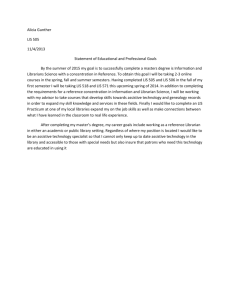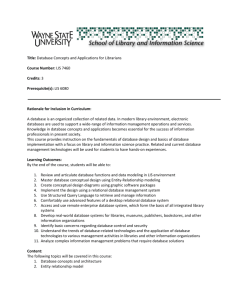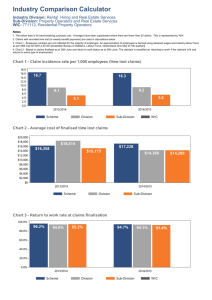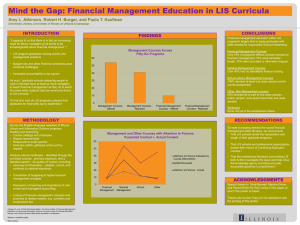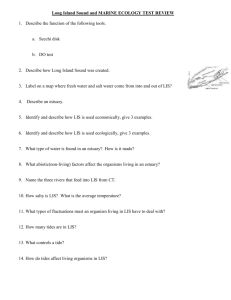Transforming the Librarians’ Library: A case study of evidence-based librarianship
advertisement
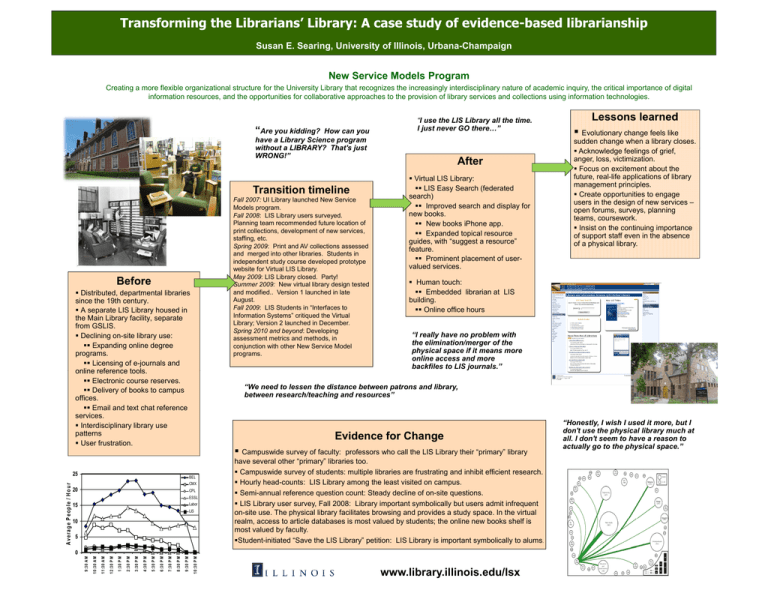
Transforming the Librarians’ Library: A case study of evidence-based librarianship Susan E. Searing, University of Illinois, Urbana-Champaign Ne Ser New Service ice Models Program Creating a more flexible organizational structure for the University Library that recognizes the increasingly interdisciplinary nature of academic inquiry, the critical importance of digital information resources, and the opportunities for collaborative approaches to the provision of library services and collections using information technologies. “Are you kidding? How can you have a Library Science program without a LIBRARY? That That's s just WRONG!” Transition timeline Fall 2007: UI Library launched New Service Models program. Fall 2008: LIS Library users surveyed. Planning team recommended future location of print collections, development of new services, staffing, etc. Spring 2009: Print and AV collections assessed and merged into other libraries. Students in independent study course developed prototype website for Virtual LIS Library. May 2009: LIS Library closed. Party! Summer 2009: New virtual library design tested and modified.. Version 1 launched in late August. Fall 2009: LIS Students in “Interfaces to Information Systems” critiqued the Virtual Library; Version 2 launched in December. Spring 2010 and beyond: Developing assessment metrics and methods, in conjunction with other New Service Model programs. Before Distributed, departmental p libraries since the 19th century. A separate LIS Library housed in the Main Library facility, separate from GSLIS. Declining on-site library use: Expanding online degree programs. Licensing of e-journals and online reference tools tools. Electronic course reserves. Delivery of books to campus offices. Email and text chat reference services. Interdisciplinary library use patterns frustration. User frustration Virtual LIS Library: LIS Easy Search (federated search) Improved search and display for new books. New books iPhone app app. Expanded topical resource guides, with “suggest a resource” feature. Prominent placement of uservalued services. “I really have no problem with the elimination/merger of the physical space if it means more online access and more backfiles to LIS journals.” Campuswide survey of faculty: CPL ESSL Labor LIS 10 5 professors who call the LIS Library their “primary” library have several other “primary” libraries too. Campuswide survey of students: multiple libraries are frustrating and inhibit efficient research. Hourly head-counts: LIS Library among the least visited on campus. Semi-annual reference question count: Steady decline of on-site questions. LIS Library user survey, Fall 2008: Library important symbolically but users admit infrequent on-site use. The physical library facilitates browsing and provides a study space. In the virtual realm, l access tto article ti l d databases t b iis mostt valued l db by students; t d t th the online li new b books k shelf h lf iis most valued by faculty. Student-initiated “Save the LIS Library” petition: LIS Library is important symbolically to alums. 9:30 P M 1 0:30 P M 8:30 P M 7:30 P M 6:30 P M 5:30 P M 4:30 P M 3:30 P M 2:30 P M 1:30 P M 1 2:30 P M 1 1:30 A M 0 9:30 A M sudden change when a library closes. Acknowledge feelings of grief, anger, loss, victimization. Focus on excitement about the future, real-life applications of library management principles. Create opportunities to engage users in the design of new services – open forums, surveys, planning teams, coursework. Insist on the continuing importance of support staff even in the absence of a physical library. Human touch: Embedded librarian at LIS building. Online office hours Evidence for Change CMX 15 After Lessons learned Evolutionary change feels like “We need to lessen the distance between patrons and library, between research/teaching and resources” BEL 20 1 0:30 A M A v e ra g e P e o p le / H o u r 25 “I use the LIS Library all the time. I just never GO there…” www.library.illinois.edu/lsx “Honestly, I wish I used it more, but I don't use the physical library much at all. I don't seem to have a reason to actually t ll go to t the th physical h i l space.””
